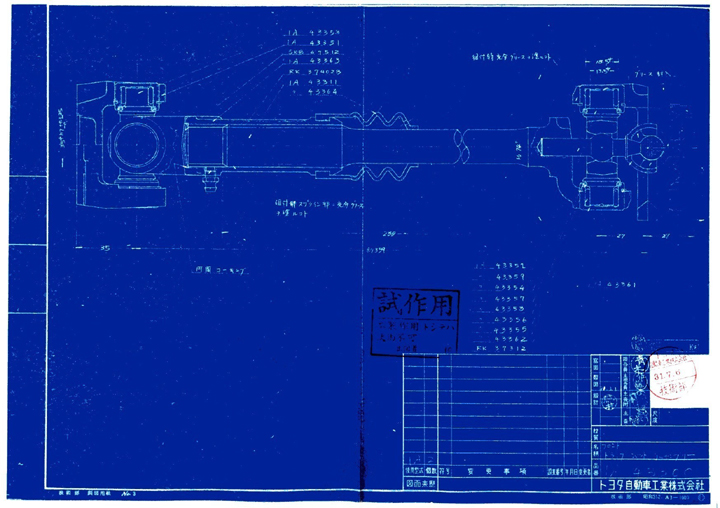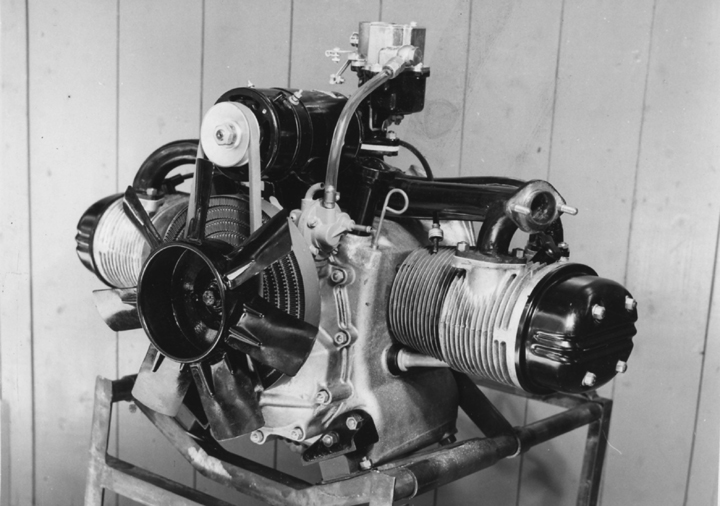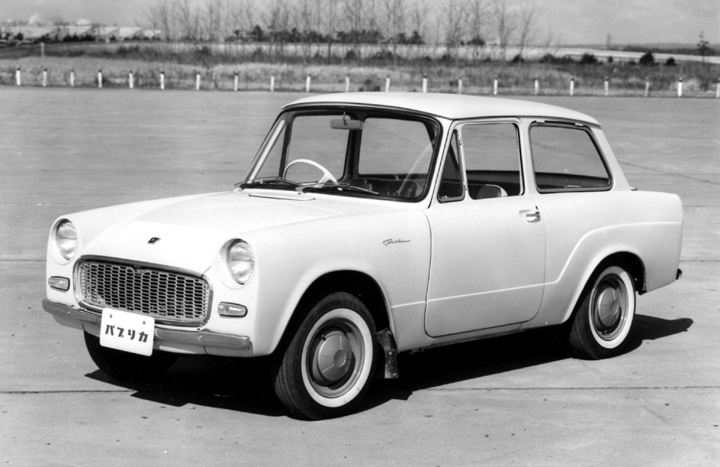Section 8. Debut of the Toyopet Crown, a Full-Fledged Passenger Car
Item 4. Changes in the Automotive Market
The People's Car Concept
When the Toyopet Crown entered the stage in January 1955, it attracted attention from all quarters and brought about new developments in the Japanese automotive industry. One of these was the 'People's Car Concept'.
The Automobile Division in the Ministry of International Trade and Industry announced on May 18, 1955 the 'Outline for Creating the People's Car' which presupposed domestic automotive technologies. The requirements for a People's Car were a maximum speed of 100 kilometers or higher, seating capacity of four, a 350-500 cc engine, fuel consumption of 30 kilometers/liter or better and a retail price below 250,000 yen. The idea was that they would call for vehicles that met these requirements, select (through prototype testing) one model fit for mass production, and aim at building up that model through investment of government funds.
The automotive industry expressed a variety of ideas and opinions in relation to this People's Car Concept, and eventually came to the conclusion at a board meeting of the Automobile Industry Association on September 8, 1955 that developing a People's Car of 250,000 yen was impossible. In early December of the same year, however, President Kawai Yoshinari of Komatsu Ltd. who intended to move into the automotive field, announced that he was preparing production of compact passenger cars along the People's Car Concept. He is purported to have had a plan to ask Porsche in Western Germany for the basic design that kept the car's price below 300,000 yen. Because President Shotaro Kamiya of Toyota Motor Sales Co., Ltd. contributed to this plan, Toyota Motor Co., Ltd. struggled in its response to this.1
In actuality, development of a compact passenger car with front-engine, front-wheel drive (FF) layout which was a size larger than the People's Car Concept was begun in May 1955 at the instruction of Senior Managing Officer Eiji Toyoda. In September development number 1A was given to this compact passenger car and 4E to its engine.
Prototype 1A was completed in August 1956 (Table 1-44). Due in part to the negative speculation around the People's Car Concept, Toyota Motor Co., Ltd. invited members of the press and people from the taxi industry to the Komoro Plant on September 22 and disclosed, extraordinarily, the prototype under development.
Table 1-44. Specifications of the 1A Prototype (1956)
|
Item
|
Description
|
|---|---|
|
Model
|
Front-wheel drive, 2 doors
|
|
Engine
|
Air-cooled horizontally opposed 2-cylinder, 4-stroke, 698 cc
|
|
Length
|
3,650 mm
|
|
Width
|
1,420 mm
|
|
Height
|
1,385 mm
|
|
Wheelbase
|
2,100 mm
|
- Source:
- Toyota Shimbun, No. 201, October 2, 1956
The Prototype 1A didn't realize the performance expected of a FF layout, however. So after changing the development number to 11A, prototyping of the FF layout with the 4E engine continued and a second prototype was completed in July 1958. However, this prototype 11A didn't provide satisfactory performance either, and its basic specifications were changed from that of a FF layout to a FR (front engine/rear-wheel drive) layout in May 1959. Building of a third prototype with development number 68A was begun, and completed in April 1960. The model name for prototype 68A was decided on as Model UP10 and the 4E engine was called the U engine. At its presentation as an economy car at the Tokyo Motor Show in October 1960, a public appeal was made for a name, and it was launched in June 1961 under the name Publica.
Although the development of a new car, originating in the People's Car Concept, experienced some setbacks, it resulted in the creation of the first Publica and caused a mass market to emerge.








